When to remove eggplants from a bush in a greenhouse and open ground and how to store the crop
In order for the eggplant harvest to be rich, not only proper care is important, but also proper harvesting, because these vegetables are harvested more than once. When is the best time to pick eggplants, what signs are used to determine ripeness, how to cut and store them - we will tell you in the article.
When is it time to remove eggplants from a bush in a greenhouse?
Ripening of eggplants lasts from 80 to 150 days and depends on varieties – they are early, middle and late. Vegetables are collected selectively as they ripen, and not all at once.
The following factors influence maturation:
- sowing time;
- variety and quality of seeds;
- weather;
- features of care.
During the ripening period, eggplants are harvested once every 5-7 days. They should not be allowed to become overripe - they become unsuitable for food.
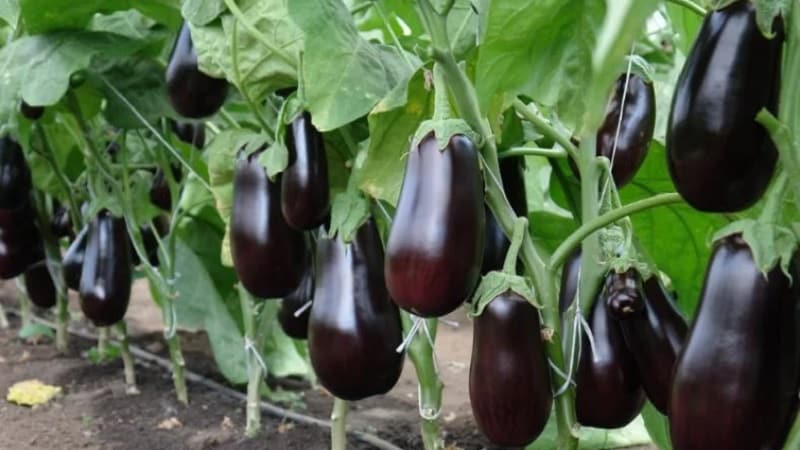
Ripening time
Early varieties of eggplants are pleased with their rapid ripening. Their main advantage is resistance to low temperatures and poor lighting.
Within the group of early varieties and hybrids there are subgroups and favorites.
Ripening in 60-70 days:
- Valentina F1;
- Bibo F1;
- Fabina F1.
In 70-80 days:
- Nadir;
- Black handsome;
- Diamond.
In 90-100 days:
- Robin Hood;
- Giselle F1.
The ripening period for mid-early eggplant varieties and hybrids also varies.
Ripening in 100-115 days:
- White Night;
- Bull heart F1;
- Alekseevsky.
In 120-140 days:
- Sancho Panza;
- Black Moon F1;
- Namesake.
Eggplants of late varieties delight gardeners in the midst of autumn.
Ripening in 120-135 days:
- City F1;
- Black handsome.
In 135-150 days:
- Sophia;
- Bull forehead;
- Mishutka.
On average, from 1 sq. m of greenhouse, 5-7 kg of eggplants are harvested. One bush produces up to eight fruits.
Interesting! “Pear of Love” or “King of Vegetables” is how eggplant is called in sunny Turkey. It is difficult to find a restaurant that does not serve a dish with this vegetable.
How to understand that the fruits are ripe and it’s time to pick them
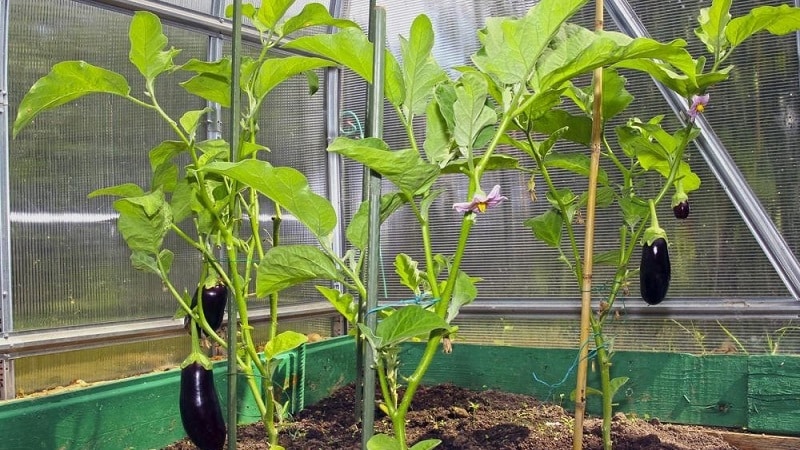
To fully experience the delicious taste and get the maximum benefit from eggplants, you need to harvest on time. To eat, wait until the fruits are technically ripe. But to collect seeds, they wait for biological ripeness.
Signs of ripeness
The ripening time of eggplants is always indicated on the packaging with seed material. If vegetables were grown correctly and were not sick, maturation will occur on time. Full maturity occurs 25-30 days after the flowers appear. What do people pay attention to during technical maturity:
- the size of the ripe eggplant must correspond to the variety;
- the pulp is dense, white, without a brown tint;
- no bitterness;
- the surface is smooth, even;
- color from purple to bluish-black (maybe white, it all depends on the variety).
Myth! There is an opinion that small eggplants taste better. This is wrong. If the vegetable is not ripe, has not grown, then its taste will be weak and unexpressed.
Technically ripe fruits are collected for seeds, based on the following signs:
- vegetables are brown;
- the peel begins to turn yellow;
- the pulp is loose;
- the seeds inside are black or brown.
It is best to choose the largest and most beautiful fruits. After harvesting, they are left for several weeks in a cool, dark place to allow the seeds to ripen fully.
When to pick eggplants in the open ground
Harvesting in open ground is not much different from harvesting in a greenhouse. Basic Rules:
- The lower fruits are cut off first, as they ripen faster.
- Then those that are closer to the top.
- The next harvest will be in about 3-5 days, during which time the following vegetables will ripen.
On a note! As eggplant ripens, it accumulates solanine, which imparts bitterness. This toxic substance is dangerous to humans in large doses. Therefore, overripe fruits are very bitter.
In garden beds, late varieties of eggplant can ripen almost to frost.
You cannot pick vegetables - this will damage the bush, and the rest of the fruits on it will not ripen. Using a knife or pruning shears, the fruits are cut off along with the stalk.
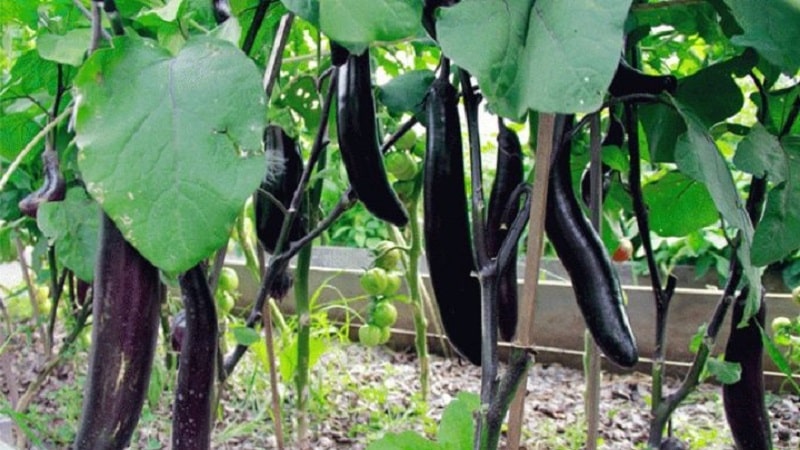
How to store harvested eggplants
For a good harvest, use different storage methods.
The storage period depends on the conditions:
- at room temperature – up to 5 days;
- in the refrigerator - no more than 2 weeks;
- on the balcony or in the pantry - about a month;
- in a basement or cellar – up to 4 months;
- dried - up to six months;
- in the freezer - about a year;
- dried – about a year;
- canned – up to 2 years.
Eggplants are stored in a basement or cellar in several ways:
- Vegetables are wrapped in paper and laid out on shelves that are previously covered with straw. They are covered with burlap on top (if sub-zero temperatures are possible, it is better with a blanket).
- Vegetables are placed in a box in rows, each sprinkled with dry sand or ash.
- Vegetables are wrapped in polyethylene several at a time so that no air remains, sealed hermetically, put in boxes and left on the floor.
If it is not possible to store the crop in a basement or cellar, they find a place for it at home. The main thing is not to exceed the temperature above +6°C, otherwise the vegetables will begin to rot.
To store in the refrigerator, each fruit is wrapped in paper or cling film. Do not allow contact with fruits or other vegetables.
Eggplants are also stored on the balcony (if it is insulated), wrapped in cling film or paper. If exposed to direct sunlight, the eggplant will lose not only its beautiful appearance, but also all its taste and become bitter. It is better to put the fruits in a box and cover.
Another option is freezing. But raw vegetables are not frozen, otherwise they will lose their taste and beneficial qualities. It is better to fry or bake them first. And then cooking will be just a pleasure, without preliminary preparation.
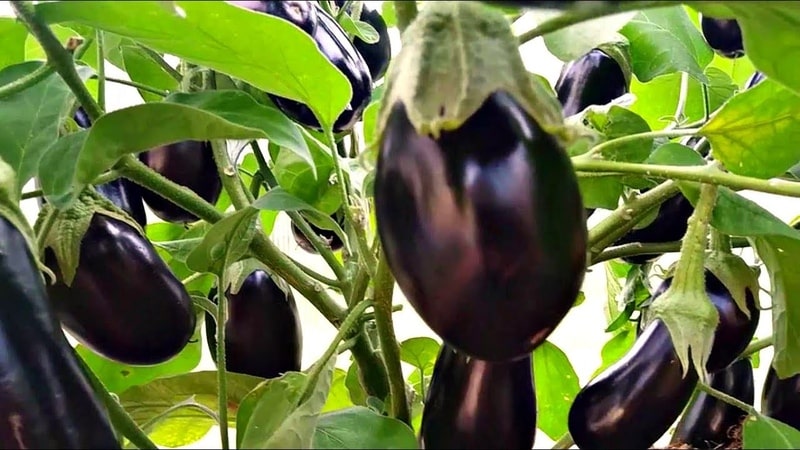
The easiest way to freeze:
- Wash thoroughly.
- Cut in a way convenient for you (slices, cubes, etc.).
- Place the eggplants in a deep container and sprinkle with salt. After 30-40 minutes, drain the resulting juice. The bitterness will go away with it.
- Blanch the fruits for about 5 minutes, place in a colander to get rid of unnecessary liquid.
- Place the finished eggplants on a board and place in the freezer. It’s good if there is a separate box for this, so that the fruits do not absorb extraneous aromas.
- After 1-2 hours, remove the eggplants and pack them into bags. This way they won't stick together.
Baked vegetables are frozen like this. Wash, cut into slices and bake. Season with salt and add your favorite spices. The finished vegetables are cooled, wrapped in cling film and placed in the freezer. This way they retain their beneficial properties as much as possible.
On a note! Eggplants cannot be frozen twice.
Tips and tricks
If you don't know what variety your eggplants are, take a closer look.When the surface begins to acquire a glossy color, break one fruit (bottom). The pulp is elastic, and the seeds have turned white - it’s time to harvest (again from below).
There are times when the fruits on the bushes are not yet ripe, but the weather has already worsened. Then the eggplants are dug up with roots and transplanted into a greenhouse.
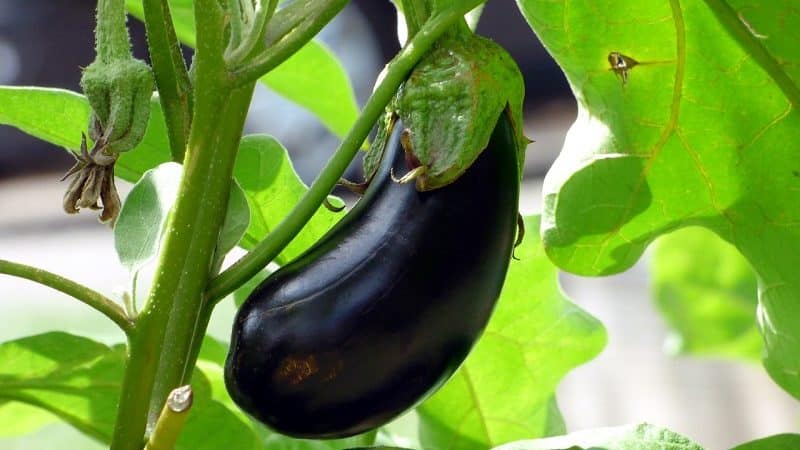
Interesting ways to store eggplants:
- Drying. They turn out tasty and healthy, suitable for preparing salads, first and second courses. First, the vegetables are thoroughly washed, cut in a convenient way, laid out on a wire rack in a thin layer and sent to an electric dryer. The optimal temperature is 60°C. The drying time is individual. If there is no electric dryer, resort to the oven. Set at 200°C for an hour, then reduce to 100°C and leave for another 4 hours. The door is left ajar to allow air to circulate well. Store in glass containers.
- Drying. It is carried out in an electric dryer or oven. The process is almost the same as drying. But the eggplants should have a dry crust and a soft center. Dried fruits are placed in glass containers and poured with hot oil, adding your favorite spices.
And of course, eggplant makes very tasty caviar.
Conclusion
Approximately 25-30 days after the flowers appear, you can begin collecting the first ripe eggplants. If the correct temperature conditions are observed, vegetables will last until the New Year, and if frozen they will delight you until the new harvest.